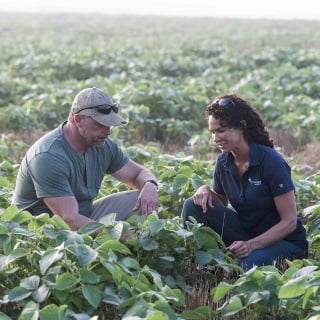Preparing tax records takes considerable time and effort. But while this perennial task can feel like a hassle, the resulting data is critical to helping farmers make informed financial decisions.
Agricultural economist David Widmar says tax time serves as “an inflection point” in the financial decision-making process – a time to reflect on the past year’s metrics and to plan for the future.
“If it weren’t for having to file for taxes, a lot of us would have really, really poor financial records,” says Widmar, co-founder and managing partner of Agricultural Economic Insights. “The key is to utilize those records beyond tax season and to turn that into something more insightful.”
That information is also helpful for producers to share with lenders, who can use the numbers to help customers plan and prepare for what’s coming. Farm Credit Mid-America recently hosted a webinar with Widmar and other professionals that sheds light on how producers can make sense of financial records and, more importantly, how to use the information to make good business decisions in the year ahead. The webinar identifies three financial measures producers should focus on heading into 2023: working capital, debt coverage ratio, and earned vs. unearned equity changes.
Working Capital
When asked what financial consideration she’s most closely watching heading into 2023, Farm Credit Mid-America’s Ashley Hopp, a senior financial officer, says liquidity is key.
“Most balance sheets are really strong right now. Many growers have built substantial working capital positions over the last few years. But let’s face it: Everything costs more than it used to,” says Hopp, whose family farm sits just a few miles from her office in Rensselaer, Ind.
“Prices will probably soften in the near future,” she adds. “As I’m meeting with borrowers this time of year while they’re doing their pre-tax planning and projections for 2023, we’re talking about the importance of retaining liquidity so when things get a little tighter, they will have reserves and can adapt.”
One starting point in measuring liquidity is working capital, which includes current assets (i.e. planned sales or cash on hand) minus current liabilities (i.e. accounts payable or land payments).
“I always like to remind folks that working capital is the original form of risk management,” Widmar says. “Working capital is not a risk management tool that we can go out and buy, but it’s one that we can build into our financial balance sheets.”
Producers should know exactly where they stand on total dollars, review past trends, and consult a financial professional to establish a solid working capital plan.
Debt Coverage Ratio
Calculating debt coverage ratio is a complex process with lots of moving pieces — yet another reason producers should consult their financial officers, Widmar says. In simple terms, the figure is determined by calculating how many dollars are available to service debt vs. how much is owed in term interest and term principal demand.
The key question at the heart of debt coverage ratio: For every dollar of debt payment, how much extra do you have? Once that’s determined, it’s essential to take into account possible income declines due to fluctuating commodity prices.
“As we start thinking about expansion plans or upgrading our equipment or buying that next piece of farm ground, this can really impact the denominator. We want to make sure we can really keep an eye on that,” says Widmar. “Know where you’re at, look at the trends, and put together a plan with your financial officers for 2023 and moving ahead.”
Equity Changes
When wrapping up financial records for 2022, one important consideration is to assess equity. Though equity might seem like a straightforward metric — the portion of assets that would remain once all liabilities are settled — in a year like 2022, there are some wrinkles.
Current challenges in determining equity include higher equipment values, livestock values and farmland values. The latter in particular can result in a fluctuating balance sheet from one year to the next.
“My best advice is to proceed with caution. I think representing assets at a reasonable price relative to the market is acceptable,” Hopp says. “What I don’t want to see is the land value yo-yoing on the balance sheet from year to year.”
To hear more insight into why these metrics are important and how solid financial information can help producers plan and prepare for the upcoming year, watch the full webinar above.





